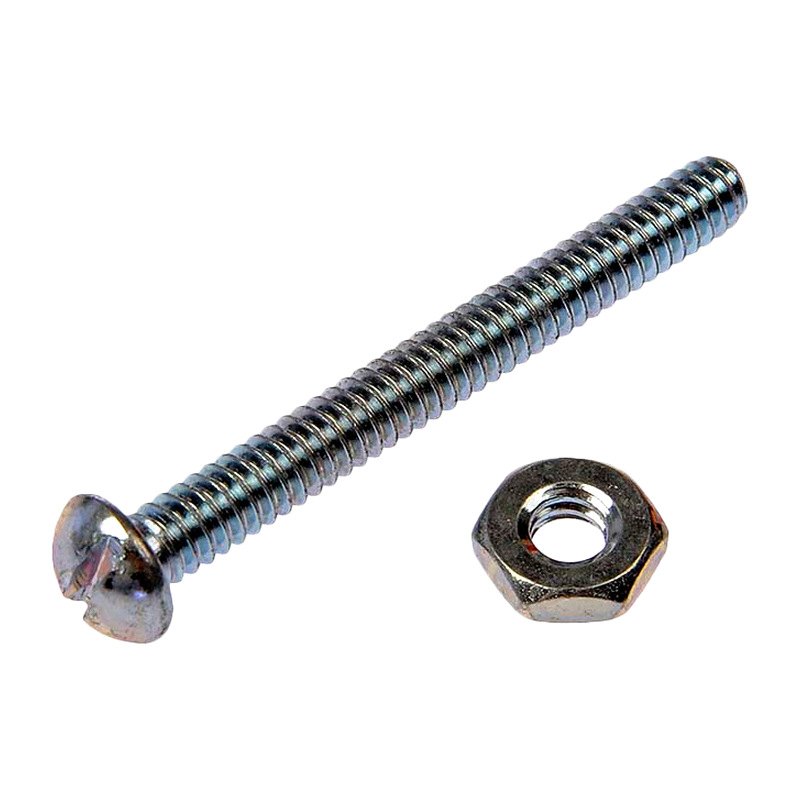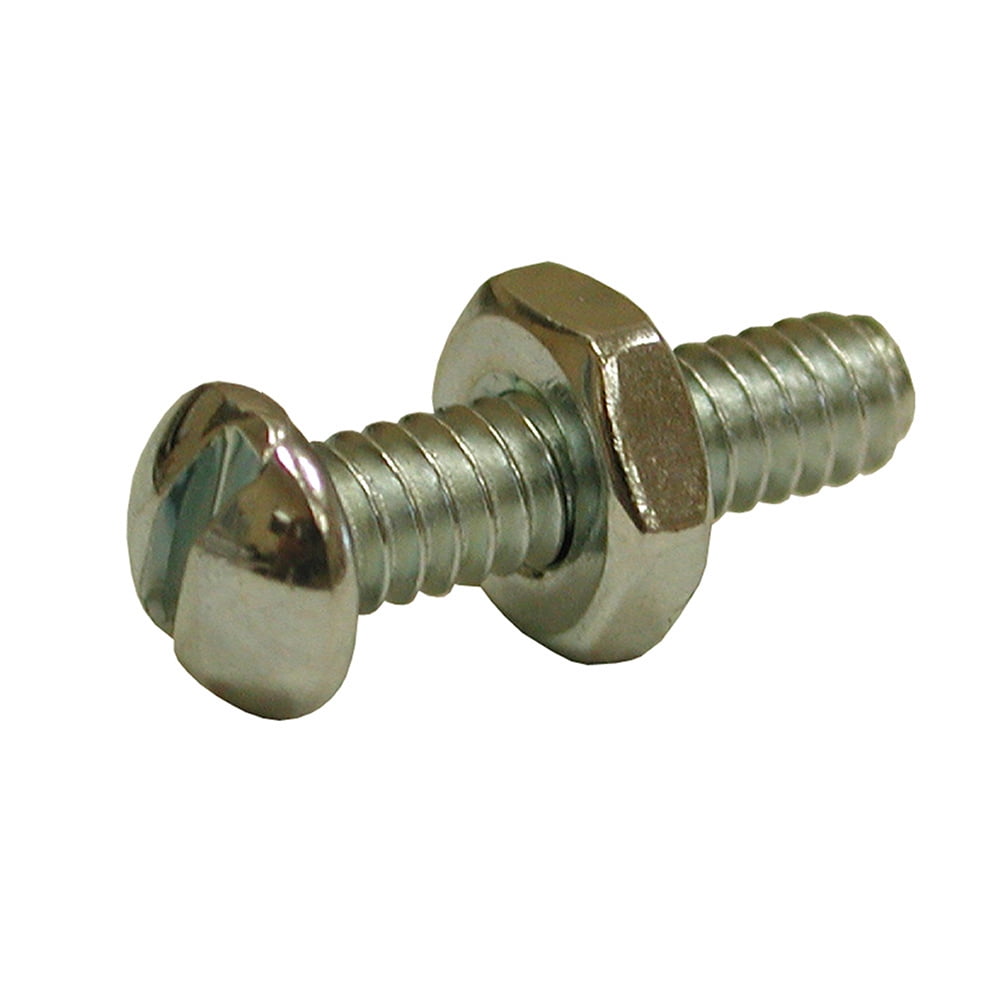Stove Bolt: A Versatile Fastener for Your DIY Projects
I. Understanding Stove Bolts: The Basics of a Reliable Fastener

A. What are Stove Bolts: Exploring the Characteristics and Composition of Stove Bolts
Stove bolts are a type of fastener designed for secure and reliable fastening in various applications. They consist of a threaded shaft and a head, both of which play essential roles in their functionality. The threaded shaft allows for the connection and tightening of multiple components, while the head provides a surface for the application of torque during installation.
B. The Importance of Proper Sizing: Understanding Thread Sizes and Lengths for Different Applications
Proper sizing is crucial when selecting stove bolts for a specific project. The two primary considerations are thread size and length.
Thread size refers to the diameter of the threaded shaft and is determined by a standardized system called the Unified Thread Standard (UTS). Common thread sizes range from #4 to 3/8″, with larger sizes available for specialized applications. It is important to match the thread size of the stove bolt with the corresponding nut or threaded hole to ensure a secure fit.
The length of the stove bolt is determined by the thickness of the materials being fastened. It is essential to choose a bolt length that allows for proper engagement of threads while providing enough thread length to securely fasten the components together. Selecting too short of a bolt may result in insufficient engagement, while choosing one that is too long may restrict proper installation or compromise the strength of the connection.

II. The Many Applications of Stove Bolts in DIY Projects
A. Woodworking Projects: Securing Wooden Components with Stove Bolts
Woodworking projects often require sturdy fasteners to ensure stability and durability. Stove bolts offer a reliable solution for securing wooden components.
- Furniture Construction: Using Stove Bolts for Stability and Durability
In furniture construction, stove bolts can be used to join separate wooden components, such as table legs, supports, or seat backs. By drilling pilot holes and inserting stove bolts, a strong and secure connection can be achieved. This ensures that the furniture is stable and can withstand the weight and use it will experience over time.
- Joinery and Cabinetry: Strengthening Joints with Stove Bolts for Long-Lasting Results
In joinery and cabinetry, stove bolts can strengthen joints between different pieces of wood. They provide a high level of clamping force, holding joints together tightly and preventing movement or separation.

B. Metalworking Projects: Fastening Metal Parts with Stove Bolts
- Automotive Repairs: Utilizing Stove Bolts for Mechanical Repairs and Replacements
Automotive repairs often require the secure fastening of metal components. Stove bolts can be used to replace or reinforce existing fasteners, providing a reliable connection. Whether it’s replacing a damaged bolt in an engine compartment or securing a metal panel, stove bolts offer the strength and durability needed for automotive repairs.
- Sheet Metal Fabrication: Connecting and Securing Metal Sheets with Stove Bolts
In sheet metal fabrication, stove bolts are commonly used to connect and secure metal sheets together. They provide a strong and tight connection, ensuring the integrity of the fabricated structure.
III. Choosing the Right Stove Bolt for Your Project
A. Material Selection: Exploring the Various Materials Available for Stove Bolts

When selecting stove bolts for your project, it is important to consider the material that will best suit your specific needs.
- Stainless Steel: Ideal for corrosion resistance in outdoor and humid environments
Stainless steel stove bolts are highly resistant to corrosion, making them an excellent choice for outdoor and humid environments. They are durable, long-lasting, and can withstand exposure to moisture, making them suitable for applications such as decking, fencing, or outdoor furniture. Stainless steel stove bolts often have added chromium, which provides enhanced corrosion resistance and strength.
- Brass: Offering Both Corrosion Resistance and an Appealing Aesthetic
Brass stove bolts not only have excellent corrosion resistance properties but also offer an appealing aesthetic. Their golden hue lends a touch of elegance to woodworking projects or installations where appearance matters. They are particularly suitable for indoor applications, providing both functionality and visual appeal.
B. Head Styles and Drive Types: Understanding the Different Options Available for Stove Bolts
Stove bolts come in a variety of head styles and drive types, each suited for specific applications and installation methods.
- Flat Head with Slotted Drive: Suitable for Flush or Countersunk Applications
The flat head allows the bolt to sit flush with the surface, providing a smooth appearance. The slotted drive requires a flathead screwdriver, which offers a traditional and classic look.
- Round Head with Phillips Drive: Convenient for General-Purpose Fastening
Stove bolts with a round head and Phillips drive are versatile and well-suited for general-purpose fastening. The round head provides a larger contact surface, offering increased clamping force and resistance to pull-out. The Phillips drive is widely available and allows for easy installation with a Phillips screwdriver.
IV. Proper Techniques for Installing and Tightening Stove Bolts
A. Pre-Installation Preparations: Ensuring the Work Area and Components are Ready for Installation
- Marking and Preparing the Installation Area: Clearly mark the locations for the stove bolts by measuring and marking the desired placement. Prepare the surface by ensuring it is clean, free from debris, and properly aligned.
- Assessing Component Compatibility: Ensure that the materials being fastened together are compatible and can withstand the clamping force exerted by the stove bolts. Consider the thickness and strength of the materials to determine the appropriate bolt length.
B. Step-by-Step Installation Guide: Detailing the Process of Installing and Tightening Stove Bolts
Proper installation and tightening techniques are crucial to achieving secure and durable fastening:
- Drilling a Pilot Hole: Preparing a Hole That Allows for Easy Insertion of the Stove Bolt
a. Select the appropriate drill bit size based on the stove bolt diameter, ensuring it creates a hole slightly smaller than the bolt diameter.
b. Securely hold the material in place and drill a pilot hole through the material, matching the desired depth.
c. Clear away any debris from the drilled hole to ensure a proper fit.
- Inserting and Tightening the Bolt: Proper Techniques for Securing the Components Effectively
a. Place the stove bolt into the drilled hole, ensuring it is fully inserted.
b. Tighten the bolt using an appropriate tool such as a wrench or socket set. Be careful not to over-tighten, as it may damage the material or strip the threads.
Conclusion:
Choosing the right stove bolt materials, head style, and drive type is essential for achieving secure and durable fastening in your DIY projects. Stainless steel stove bolts offer excellent corrosion resistance, while brass stove bolts provide a visually appealing option. Selecting the appropriate head styles and drive types ensures proper installation and functionality. By following pre-installation preparations and step-by-step installation techniques, you can confidently use stove bolts to secure components effectively. By understanding the different options available and employing proper techniques, you can enhance the reliability and longevity of your DIY projects.

